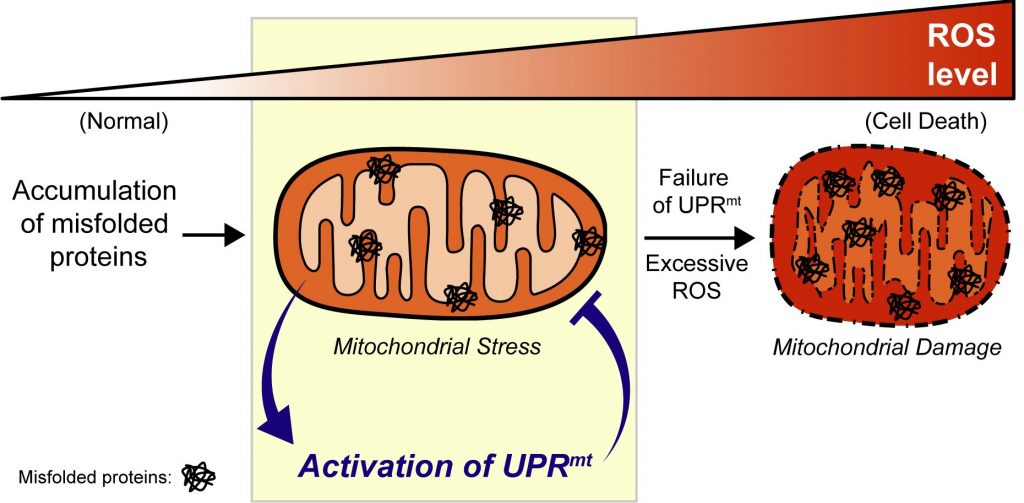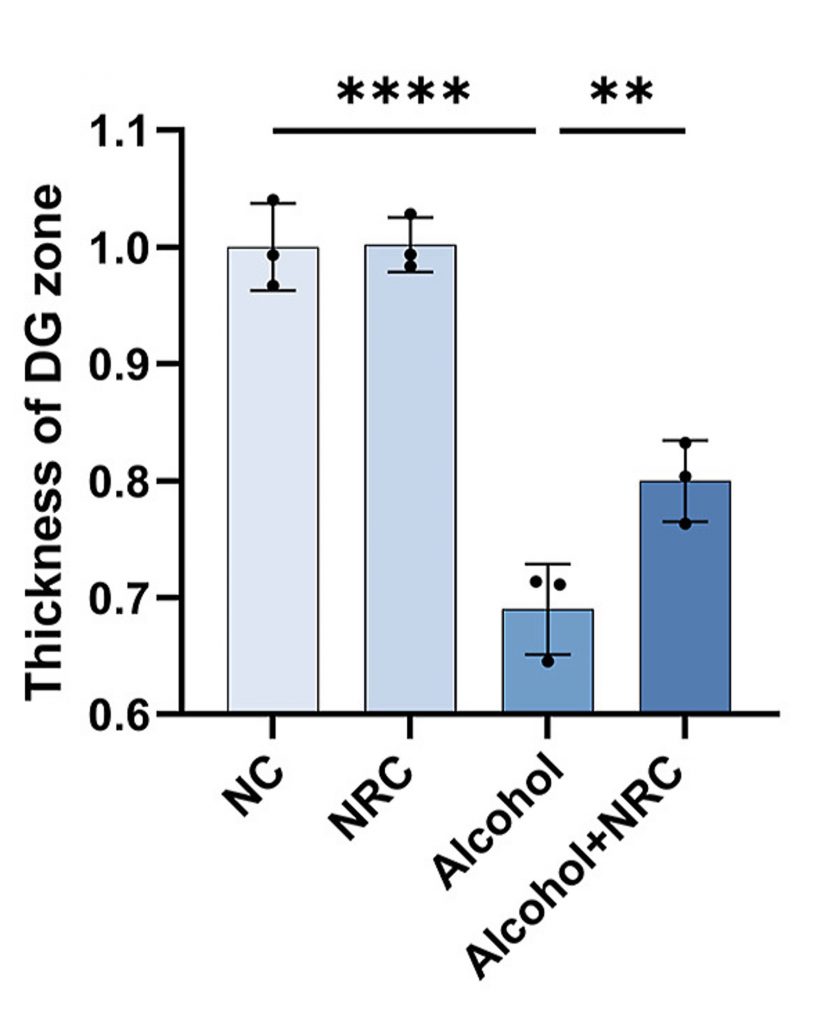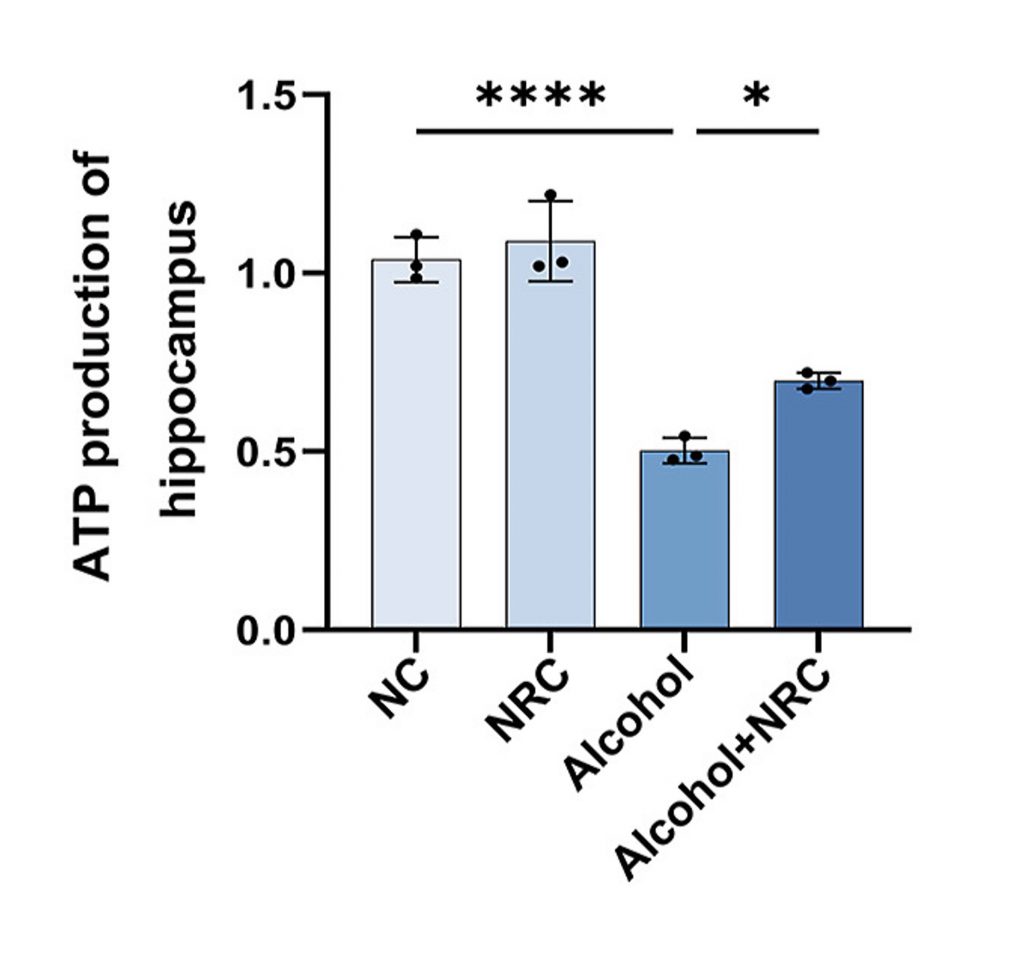Key Points:
- Alcohol retards memory and degenerates the brain of mice, which NRC counteracts.
- NRC also mitigates brain inflammation while improving mitochondrial health in mice that consume alcohol.
Alcohol is one of the most commonly abused drugs. While the immediate effects of heavy drinking are well-known, chronic, excessive alcohol consumption is a major contributor to neurodegeneration, often manifesting as cognitive impairment, memory deficits, and an increased risk of alcoholic dementia. Despite the pervasive nature of this damage, a targeted therapeutic strategy to halt or reverse the neuronal decline has remained elusive.
A new study published in Genes & Diseases by researchers in China offers a promising avenue for treatment, demonstrating that a nutritional supplement similar to nicotinamide riboside (NR) called nicotinamide riboside chloride (NRC) can effectively counteract alcohol-induced brain damage in mice.
How Alcohol Ages the Brain
A crucial avenue by which alcohol inflicts long-term damage on brain cells is through the disruption of mitochondria, the tiny “powerhouses” responsible for generating the energy (ATP) that neurons need to function. Neurons, which are among the most energy-demanding cells in the body, are particularly vulnerable to mitochondrial failure. In the new study, the China-based researchers found that alcohol-induced neuronal damage is fundamentally driven by two interrelated issues within the mitochondria:
- Impaired Mitophagy: Mitophagy is the cellular process responsible for clearing out old, damaged, or dysfunctional mitochondria. It is a critical form of cellular recycling. When this process is impaired, “sick” mitochondria accumulate, leading to oxidative stress and cellular toxicity.
- Disrupted Mitochondrial Unfolded Protein Response (UPRmt): This is a stress-response pathway that acts as a quality control system inside mitochondria. When proteins inside the organelle become misfolded or damaged due to stress (like alcohol exposure), UPRmt is activated to repair the damage or signal for the cell’s destruction if the damage is too severe.

The study found that alcohol exposure suppresses the efficiency of both these systems in neurons, creating a toxic environment where damaged mitochondria accumulate and the cell’s ability to cope with stress is severely compromised.
The Role of NR
NRC is a precursor to NAD+, a coenzyme essential for thousands of metabolic processes, including energy production and DNA repair. NAD+ levels naturally decline with age and are further depleted by stressors like chronic alcohol exposure. By supplementing with NRC, the researchers aimed to boost NAD+ levels and see if this could bypass the alcohol-induced damage.
Cognition and Neurodegeneration
The results in the mouse model were striking. Mice that received NRC showed significant improvements in cognitive function. Behavioral tests designed to assess memory and learning capacity showed that NRC largely prevented the cognitive impairment caused by alcohol exposure. Moreover, the supplement mitigated the alcohol-induced thinning of the dentate gyrus, part of the structure in the brain that consolidates memories called the hippocampus. Thus, these findings suggest NRC counters the cognitive deficits and neurodegeneration associated with alcohol consumption.

Inflammation and Mitochondrial Health
Furthermore, NRC supplementation counteracted key underlying biological drivers of cognitive decline and neurodegeneration. In addition to reducing markers of inflammation, NRC actively enhanced the UPRmt quality control system and, in turn, restored mitophagy, allowing neurons to effectively clean house and replace damaged mitochondria with healthy ones. This could account for the improvements in ATP production observed in the hippocampus of NRC-treated mice, as elevations in ATP point to improvements in mitochondrial health.

Translating the Dose: A Theoretical Comparison
While the study was conducted in mice, a theoretical comparison of the dosage provides context for the severity of the model used. The mice were subjected to a chronic alcohol regimen for four weeks, a model designed to induce significant, measurable brain damage. Based on allometric scaling, which adjusts for metabolic differences between species, the dose of alcohol administered to the mice is roughly equivalent to a 70 kg (~154 lbs.) human consuming approximately 2.4 standard alcoholic drinks per day continuously for four weeks.
Boosting NAD+ to Prevent Accelerated Brain Aging
This research provides compelling evidence for the use of NRC as a therapeutic agent against alcohol-induced brain damage. By identifying the specific molecular pathways—UPRmt and mitophagy—that are disrupted by alcohol and restored by NRC, the study opens the door for targeted interventions. While the findings are promising, it is crucial to emphasize that this work is in the preclinical stage. Further clinical trials are necessary to confirm the safety, efficacy, and optimal dosage of NRC in human subjects suffering from alcohol-related cognitive decline.